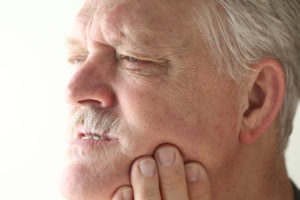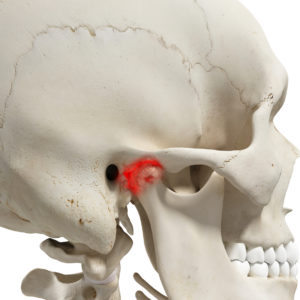 Dentists play a key role in both diagnosis and management of facial pain. Their examination of the face, jaws, gums, and teeth will give important clues as to the source of pain.
Dentists play a key role in both diagnosis and management of facial pain. Their examination of the face, jaws, gums, and teeth will give important clues as to the source of pain.
There are many causes of facial pain including toothache, dental abscess, tooth clenching and grinding, sinus issues, nerve conditions and problems with the jaw joint.
Many patients experience facial pain related to sore overworked chewing muscles, often related to excessive clenching and grinding of the teeth. During sleep we have no control over this excessive clenching and grinding which can be very damaging, resulting in cracked, broken, or even loose teeth.
 Signs and symptoms of excessive tooth clenching and grinding may include sensitive teeth, chronic facial pain, tension headaches, flattened and worn tooth surfaces, broken or chipped teeth, loose teeth, and stiffness and pain around the jaw joint which can often feel like earache.
Signs and symptoms of excessive tooth clenching and grinding may include sensitive teeth, chronic facial pain, tension headaches, flattened and worn tooth surfaces, broken or chipped teeth, loose teeth, and stiffness and pain around the jaw joint which can often feel like earache.
Tooth clenching and grinding can be stress-related and some find that mindfulness or relaxation techniques can be helpful. Your dentist may recommend a specialised mouthguard called an occlusal splint which is generally worn during sleep and protects the teeth from damage. Sometimes treatment may be necessary to repair damaged teeth.
The jaw joint, located just in front of the ear, is one of the most complex and frequently used joints in the body. Jaw joint disorders are common, affecting about 7 in 10 people during their lifetime.
Signs and symptoms of a jaw joint disorder may include difficulty opening the mouth, a “locked” jaw, clicking or popping noises, pain when chewing or opening wide, pain in or around the ears and cheeks, headaches or migraines, or an uncomfortable “bite” (the teeth don’t feel like they fit together properly when closing together).
Most symptoms of jaw joint disorders are mild and do not require treatment, with symptoms resolving over time. However when more severe, symptoms can interfere with eating and cause significant pain and distress.
Treatment may involve provision of an occlusal splint, relaxation and stress management, behaviour modification therapy, physiotherapy, modified diet, heat packs, medication, and in some rare cases surgery.